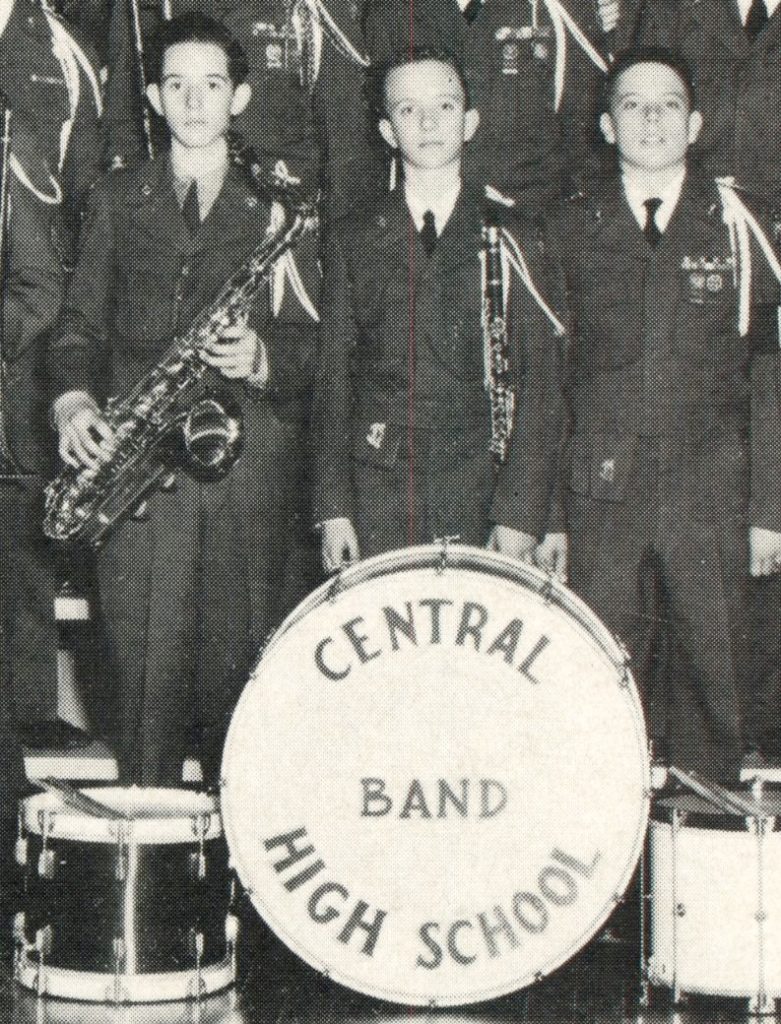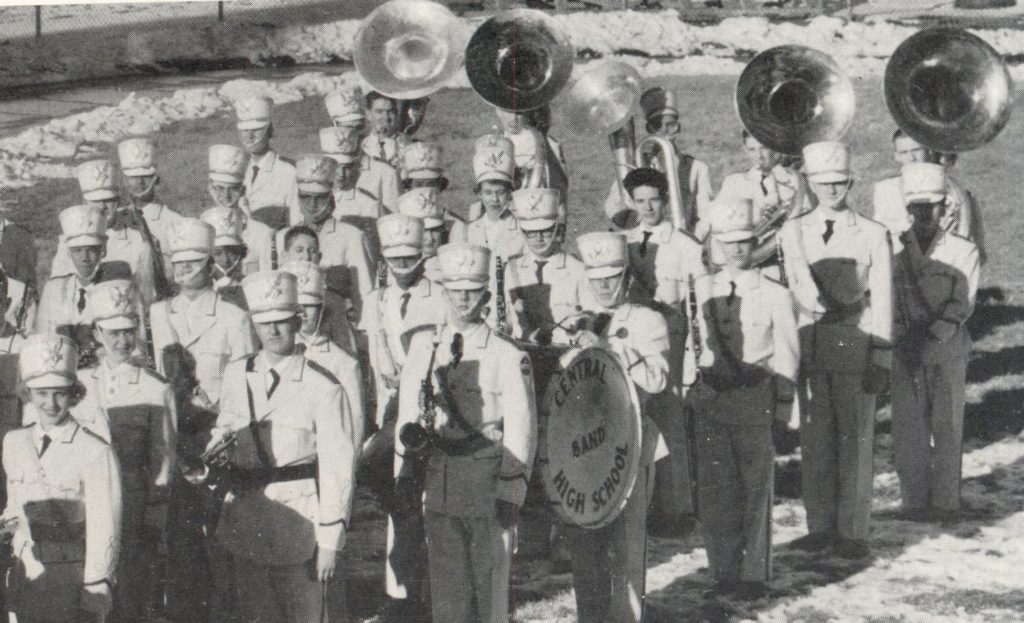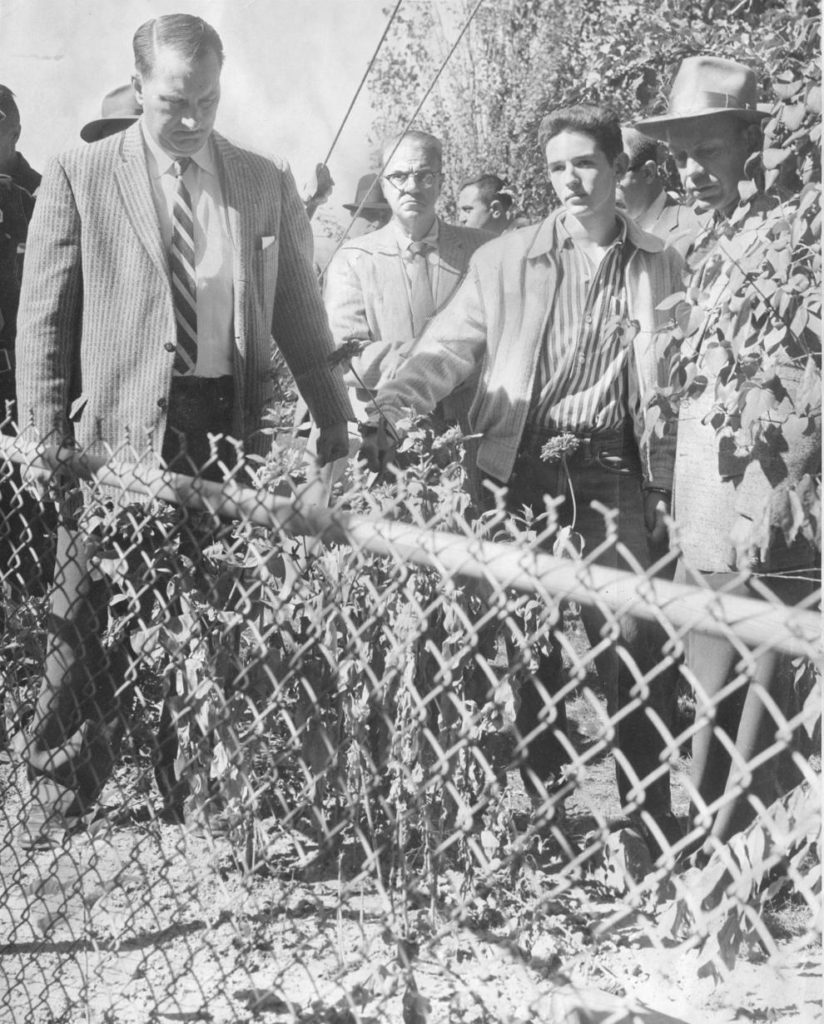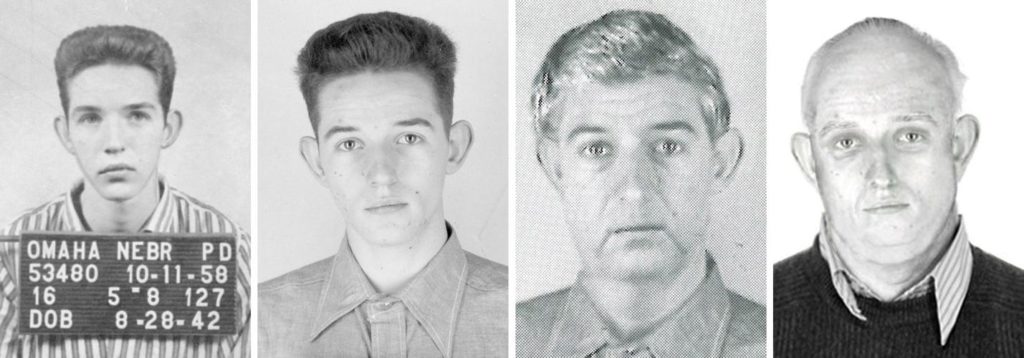By Elise O’Neil
Humans are resilient. When horrific events or tragedies inevitably take place, we attempt to rationalize them. Finding some meaning, a motive, a reason why – can help us to cope with disaster, move on, and trust that the circumstances that created our misfortune are unlikely to present themselves a second time. And when we can’t immediately understand a tragedy, we feel obligated to rehash it again and again until we find an explanation that makes the most sense to us.
On September 27, 1958, 16-year-old William Leslie Arnold murdered his parents. Police officers, prosecutors, judges, family members, his fellow students at Central High School—all have put forth various theories as to why he did this. Was he a budding psychopath with a violent streak, quick to lash out when he didn’t get his way? Was he a good kid who finally snapped after years of verbal abuse by a domineering mother? Maybe it was simply the inevitable outcome of feeling trapped in a dysfunctional version of the idealized one-size-fits-all nuclear family structure ubiquitous in mid-century America. Whatever the case, his reasons remain oblique. All we can do is comb over 64 years of retellings and draw our own conclusions.
He seemed like a good kid. He had just started his junior year at Central where his teachers referred to him as “quiet…polite, attentive in class and well behaved.”[1] Known by his middle name, Leslie, he was a mostly B student who enjoyed science and was interested in going to college. A glance at the yearbooks from his freshman and sophomore years (both of which can be found in DCHS’s extensive yearbook collection) show him participating in numerous extracurricular activities including ROTC, track,[2] and band.[3] He was reportedly an avid Elvis fan,[4] and his affinity is evident in his sophomore year band photo. He has removed his hat, showing off an impressively tall greased hairstyle in imitation of the King.[5] It’s difficult to look at these photos of Arnold without thinking about the acts he would soon commit. But without that context, he appears incredibly unextraordinary.


Still, in the aftermath of his crimes, accounts of his precarious emotional state began to slowly trickle into the pages of the World-Herald. His great-uncle, Benjamin McCammon, told a reporter, “Leslie always did have a violent temper,” couching this assertion with another: “But he didn’t smoke or drink.”[6] And though McCammon claimed he’d never seen him “lay a finger on anybody,” Arnold’s younger brother Jim later recalled that Leslie would often physically attack him with socks on his hands so that he wouldn’t leave a mark.[7]
And then there was Opal, Arnold’s slain mother. Descriptions of the 40-year-old homemaker are tinged with vague references to a possible mental illness. Both neighbors and Arnold himself spoke to the difficult relationship between mother and son. It’s alleged that she showed little interest in her older son apart from verbally berating him and mocking him for his musical inclinations. It was clear to neighbors that she preferred the 13-year-old Jim. Later, Arnold would tell psychologists that Opal would sometimes refuse to let him back in the house, resulting in his sleeping in the nearby Ak-Sar-Ben stables.[8] His allegedly “henpecked” father, Bill, was little help—encouraging him to grin and bear his treatment to maintain the family unit.[9]

The pressure cooker environment created by Arnold and his mother’s clashing tempers was perhaps bound to result in tragedy. Then again, most children mistreated by their parents don’t end up shooting them six times each in the kitchen of their family home.[10]

On the day in question, a Saturday, Arnold and his mother launched into an hours-long heated argument about his girlfriend (of whom his mother didn’t approve) and his use of the phone (she felt he was tying up the line for too long). She ended the row by declaring that he could no longer use either family car to take his girlfriend to a drive-in movie that night. He pulled his father’s 22-caliber semiautomatic Remington rifle out of his parents’ closet, apparently intending to show his mother he meant business. And then she laughed at him. So he shot her. And kept shooting her. When Bill arrived home minutes later, he took in the scene and lunged at his son, so Leslie shot him, too. Arnold’s behavior in the aftermath of the murders is notable. After dragging his parents’ bodies to the basement and asking a neighbor to take in his brother,[11] he picked up his girlfriend and her brother in the family’s 1957 Mercury and headed for the drive-in. He took in a double feature and ended the night at Tiner’s[12] (whose sign is featured in DCHS’s current exhibit Omaha’s AUTO-biography, on loan from the Durham Museum.) The next night he buried the bodies in his backyard beneath a lilac bush[13] and tossed the bloodstained rugs on which his parents died into the Papio Creek.[14] He covered his tracks, materializing to open his father’s business the Monday morning after the murders, telling all that his parents had had to take a sudden trip out of town.[15] Leslie only missed two days of school in the subsequent two weeks before his crime was discovered.[16] Eight months after Arnold led police to his parents’ shallow graves in their own backyard, he pled guilty to two charges of second-degree murder and was sentenced to life in prison. In court appearances, he clutched a rosary and “blinked back tears.”[17]


The question remains: Why did he do it? What was on his mind in the seconds it took for him to raise the rifle and shoot at the sound of his mother’s laughter? Some killers relish talking about their crimes. Others are openly remorseful. Still others spend the remainder of their lives never speaking to a soul about the details of what they’ve done. But we can’t ask Leslie Arnold for any reflective thoughts on his crimes, because in 1967, nearly nine years into his prison sentence, he escaped.[18] And he’s never been located. His reasons for making his escape at this juncture are even more unknowable that those for his parents’ murder. Because he was a minor when he was sentenced to his life term, he likely would have been eligible for parole in a just a year or so.[19] Barring any potential future crimes, Leslie Arnold would be free and among us today if he hadn’t escaped.
Instead, he’s a fugitive. Though there have been several leads over the decades, it has been assumed that Arnold landed in Brazil. He had spoken to a fellow inmate of escaping to Brazil, and in 2017 a recently-digitized Brazilian immigration card from 1968 containing his information was located on familysearch.org. If it was indeed Arnold who provided his information to immigration agents, he confoundingly gave them his real full name, birth date, and place of birth. And though there is a notation on the back of the card connecting Arnold to an FBI investigation for a missing fugitive, it is unknown whether the FBI was ever informed by Brazilian authorities of his arrival to the country.[20] If he is still alive today, he would be 80 years old.

It’s unlikely anyone will ever get the chance to speak to Leslie Arnold again about the murders of his parents and his subsequent escape from the Nebraska State Penitentiary. He likely wouldn’t be able to provide satisfactory answers anyway. This is a story that has been told many times resulting in increasingly compelling theories. Could the rationalization from the mouth of the killer ever measure up to what we can conjecture from imagination? One thing is certain, however. There is no halting the human desire to make sense of a case like this. And after all, a spooky story is that much more frightening when it doesn’t have an ending!

[1] “Youth Called Quiet, Polite; School Shocked by Story.” Omaha World-Herald. 12 October 1958, p. 24.
[2] Central High School O-Book 1957, p. 112. Douglas County Historical Society Archive.
[3] Central High School O-Book 1958, p. 63. Douglas County Historical Society Archive.
[4] Cordes, Henry J. “The Mystery of Leslie Arnold – Part One: The Killings.” Omaha World-Herald. 3 September 2017, p. 11A.
[5] Central High School O-Book 1957, p. 112. Douglas County Historical Society Archive.
[6] “Boy Was Unconcerned After Parents’ Murder.” Omaha World-Herald. 12 October 1958, p. 24.
[7] Cordes, Henry J. “The Mystery of Leslie Arnold – Part One: The Killings.” Omaha World-Herald. 3 September 2017, p. 11A.
[8] Ibid.
[9] Once Upon A Crime Podcast. “Episode 159: Bad Seeds: Leslie Arnold.” 2/24/2020.
[10] “Local” Omaha World-Herald. 13 October 1958, p. 2.
[11] “Youth Kills Father, Mother to Get Own Way About Car.” Omaha World-Herald. 12 October 1958.
[12] Cordes, Henry J. “The Mystery of Leslie Arnold – Part One: The Killings.” Omaha World-Herald. 3 September 2017, p. 11A.
[13] “Life Sentence to Youth Who Killed Parents.” Omaha World-Herald. 2 June 1959, p. 1.
[14] “Relatives Tell Youth: Don’t Discuss Killings.” Omaha World-Herald. 3 October 1958, p. 3.
[15] “Youth, 16, Confesses: Shot, Buried Parents.” Omaha World-Herald. 11 October 1958, p. 1.
[16] “Youth Called Quiet, Polite; School Shocked by Story.” Omaha World-Herald. 12 October 1958, p. 24.
[17] “Life Sentence to Youth Who Killed Parents.” Omaha World-Herald. 2 June 1959, p. 1.
[18] “Two Omahans’ Escape ‘Clean.’” Omaha World-Herald. 19 October 1967, p. 6.
[19] “Is Arnold Alive, Dead? Police Still Puzzled.” Omaha World-Herald. 12 September 1976, p. 41.
[20] Cordes, Henry J. “Part Four: Epilogue.” Omaha World-Herald. 10 September 2017, E-Edition.